Discover 20 hidden attractions, cool sights, and unusual things to do in Chiang Mai (Thailand). Don't miss out on these must-see attractions: Wat Phrathat Doi Suthep, Wat Phra Singh, and Wat Chedi Luang. Also, be sure to include Wat Chiang Man in your itinerary.
Below, you can find the list of the most amazing places you should visit in Chiang Mai (Chiang Mai).
Table of Contents
Wat Phrathat Doi Suthep
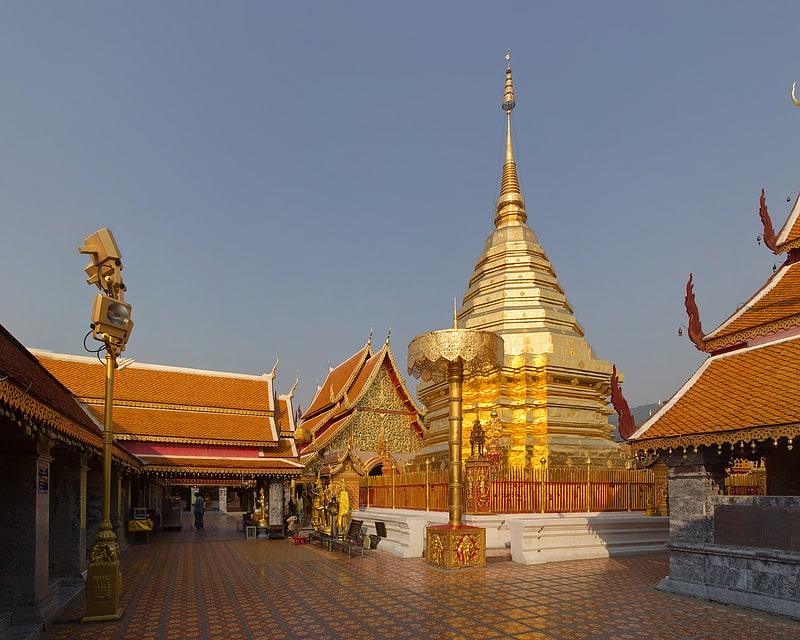
Also known as: วัดพระธาตุดอยสุเทพราชวรวิหาร
Temple in Chiang Mai, Thailand. Wat Phra That Doi Suthep is a Theravada Buddhist temple in Chiang Mai Province, Thailand. The temple is often referred to as "Doi Suthep" although this is actually the name of the mountain where it's located. It is a sacred site to many Thai people. The temple is 15 kilometres from the city of Chiang Mai and situated at an elevation of 1,073 meters. From the temple, impressive views of downtown Chiang Mai can be seen.[1]
Address: Mueang Chiang Mai District, 50200 Doi Suthep
Wat Phra Singh
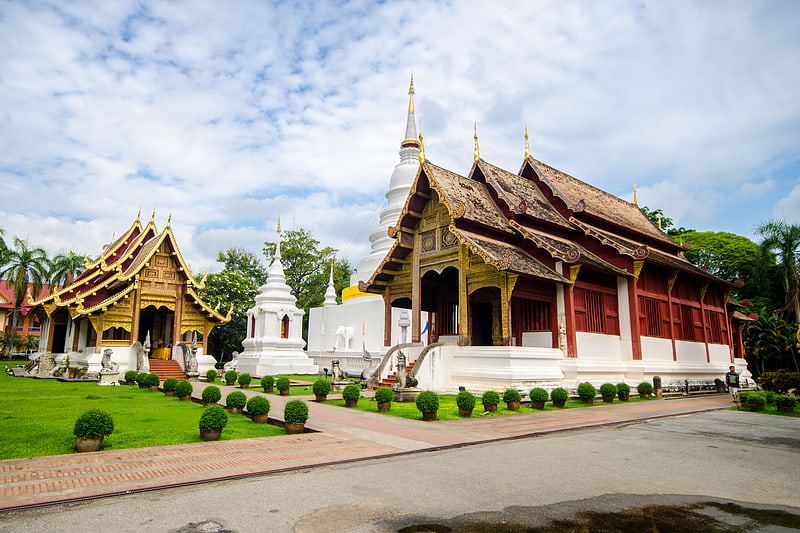
Also known as: วัดพระสิงห์วรมหาวิหาร
Restored 14th-century Buddhist temple. Wat Phra Singh is a Buddhist temple in Chiang Mai, northern Thailand. King Ananda Mahidol, bestowed upon it the status of Royal temple of the first grade in 1935.[2]
Address: Singharat Road, Chiang Mai
Wat Chedi Luang

Also known as: วัดเจดีย์หลวงวรวิหาร
Temple known for its ruined chedi. Wat Chedi Luang is a Buddhist temple in the historic centre of Chiang Mai, Thailand. The current temple grounds were originally made up of three temples — Wat Chedi Luang, Wat Ho Tham and Wat Sukmin.[3]
Address: Phrapokklao Rd., 50200 เมืองเชียงใหม่
Wat Chiang Man
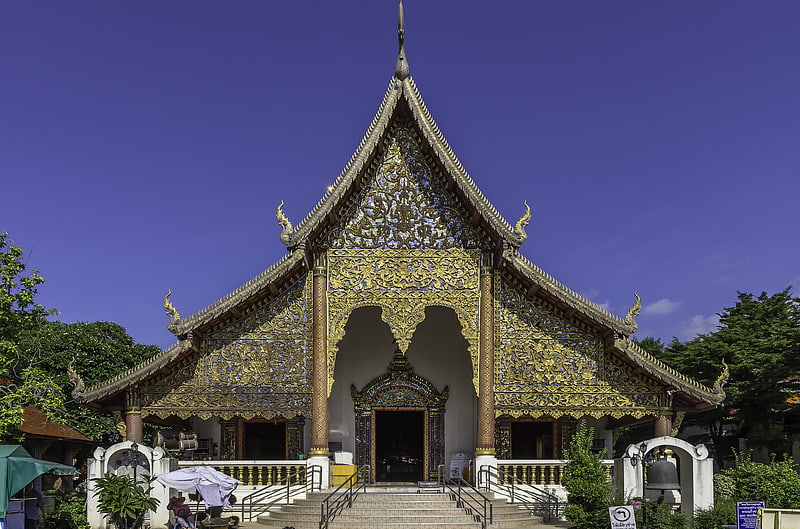
Also known as: วัดเชียงมั่น
Picturesque temple with ancient statues. Wat Chiang Man is a Buddhist temple inside the old city of Chiang Mai, in northern Thailand.[4]
Address: 171 ถ.ราชภาคินัย, 50200 เมืองเชียงใหม่
Wat Umong
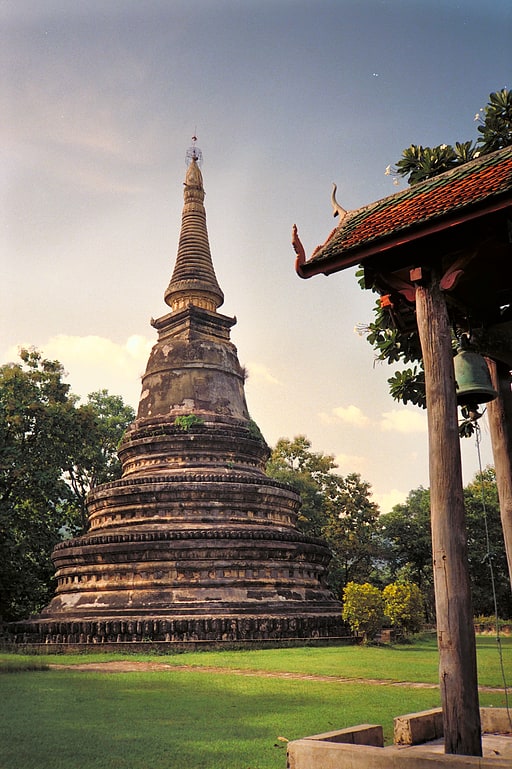
Also known as: วัดอุโมงค์
Venerable Buddhist temple built in 1297. Wat Umong is a 700-year-old Buddhist temple in Chiang Mai, Thailand.[5]
Address: 135 Moo 10 Suthep Rd., 50200 เมืองเชียงใหม่
Wat Suan Dok

Also known as: วัดสวนดอก
Temple in Chiang Mai, Thailand. Wat Suan Dok, also known as Wat Buppharam is a Buddhist temple in Chiang Mai, northern Thailand. It is a Royal Temple of the Third Class. The temple is on Suthep Road, approximately one kilometre west of Suan Dok gate at the west side of the moat.
The Chiang Mai campus of the Buddhist Mahachulalongkornrajavidyalaya University is housed within the temple compound.[6]
Address: 139 ถ.สุเทพ, 50200 เมืองเชียงใหม่
Wat Lok Moli
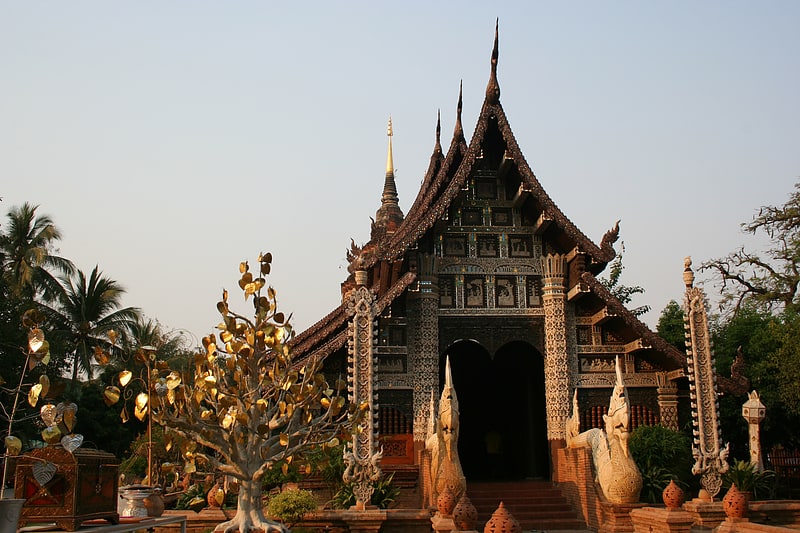
Also known as: วัดโลกโมฬี
Ornate Buddhist temple with a tall tower. Wat Lok Moli is a Buddhist temple in Chiang Mai, northern Thailand. The temple is situated on the north side of the north moat surrounding the old part of the city, about 400 meters west of the Chang Phuak city gate.
It is not known when the temple was built but it is first mentioned in a charter in 1367 CE. The sixth king of the Mangrai dynasty, King Kuena (1355-1385), invited ten Buddhist monks from Burma to spread their teachings on Theravada Buddhism. The monks were housed in this temple.
In 1527, King Ket (also known as Mueangketklao or Phra Kaew Muang) commissioned the chedi and in 1545, he also had the viharn (assembly hall) built.
The ashes of several members of the Mengrai dynasty were placed in this temple. Until the demise of their dynasty, the Mengrai royal family took the responsibility for maintaining the temple. The ashes of Queen Wisutthithewi are interred in a chedi at the temple.
The brickwork of the large chedi is left mostly bare; this in contrast to the, often recently, stuccoed chedis of other temples in Chiang Mai. Of note are the finely sculptured Nāgas and wooden temple façade. The temple is aligned along a north–south axis – most Buddhist temples are orientated towards the east, towards the rising sun.[7]
Address: 298/1 Manee Nopparat Road, Chiang Mai
Chiang Mai Night Bazaar
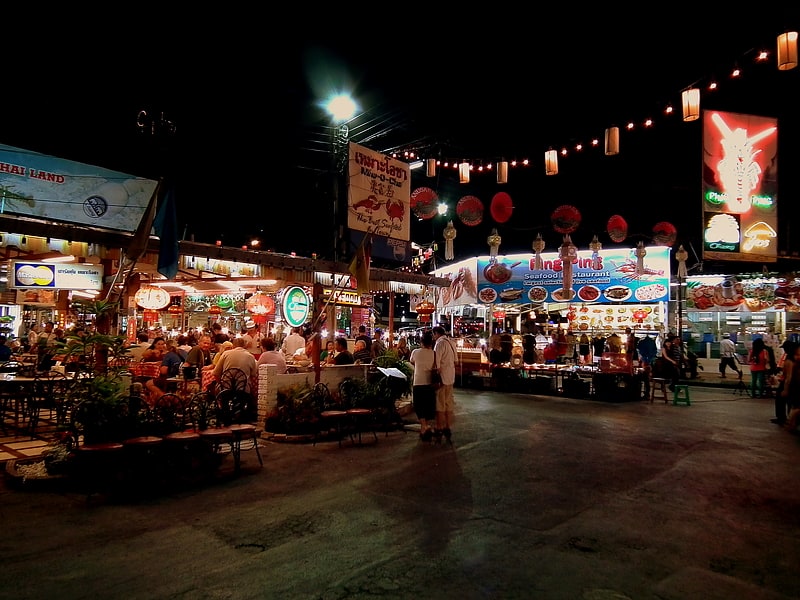
Night market in Chiang Mai, Thailand. Chiang Mai Night Bazaar or just Night Bazaar is directly east of the city moat, between it and the Ping River, on Chang Khlan Road, between Tha Phae and Sridonchai Roads. It is known for its handicrafts and portrait paintings. There are also jewelry, toys, clothing, and high tech items such as CDs and DVDs. The market is one of the most popular tourist attractions in Chiang Mai. At first, the market was owned by Chinese merchants, but it grew in size as more commercial buildings were built, and it was no longer owned by a single group of people. Instead, there are many owners, and most of them are Thai.[8]
Address: Chang Klan Rd, 50200 เมืองเชียงใหม่
Wat Chet Yot
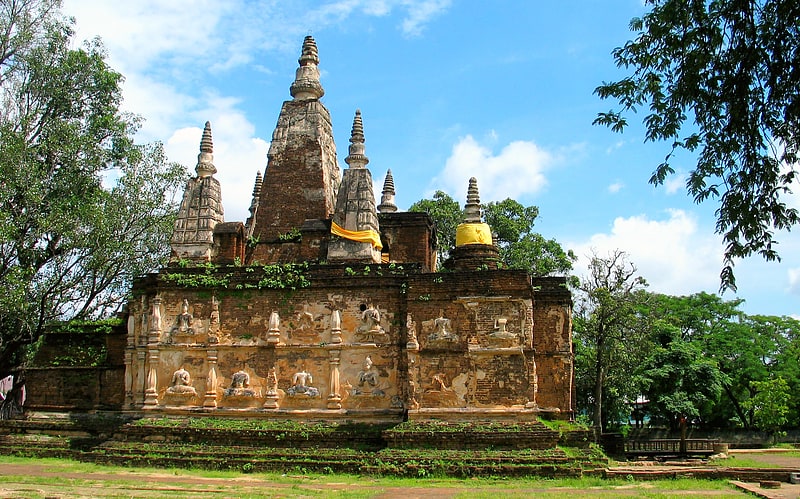
Also known as: วัดโพธารามมหาวิหาร
Temple in Chiang Mai, Thailand. Wat Chet Yot or officially called Wat Photharam Maha Wihan is a Buddhist temple in Chiang Mai in northern Thailand. It is a centre of pilgrimage for those born in the year of the Snake.[9]
Highland People Discovery Museum
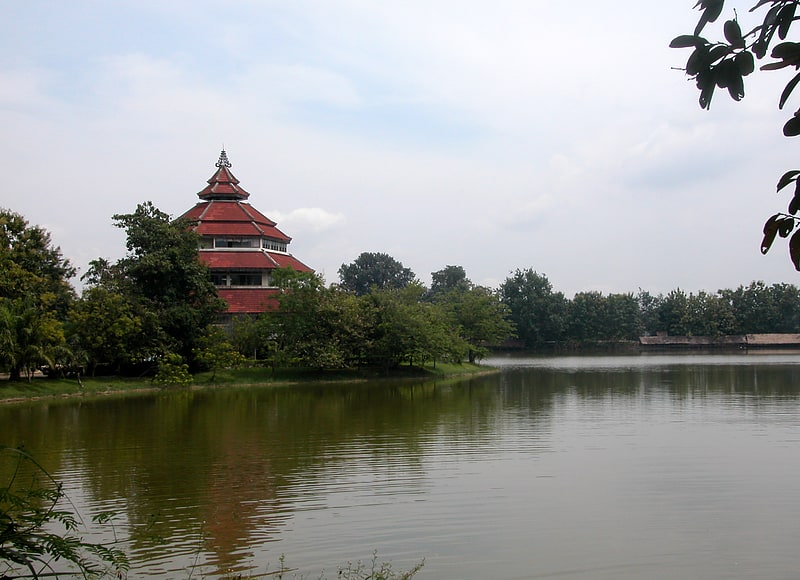
Museum in Chiang Mai, Thailand. The Highland People Discovery Museum, formerly known as Tribal Museum is an ethnographic museum in the Mueang Chiang Mai District of Chiang Mai province, northern Thailand, showing the life of Thailand's minority hill tribes.[10]
Buak Hat Park
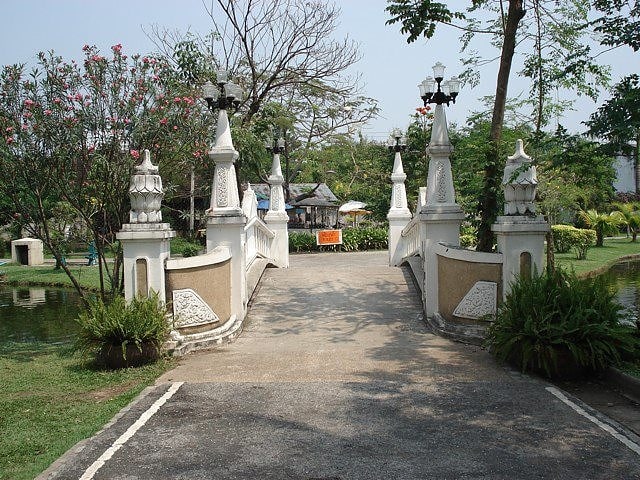
City park in Chiang Mai, Thailand. Buak Hat Public Park is a public park located in the southwest corner of Chiang Mai’s old city. It is open every day from 0500 - 2100. Beautifully landscaped with ponds, bridges, lush flowerbeds, fountains, and wide lawn areas, Suan Buak Hat is perfect for exercise, play, and photography. It is a very famous place for local people and tourists to visit and is a location for many of Chiang Mai’s festivals such as the Flower Festival.
The full name is 'suan satarana nong buak hat' - the first part means 'garden public' and the name: หนอง บวก หาด 'nong buak hat' can translate as 'marsh improved beach' - this was probably a part of the city that collected all the water, so it became a park. The final sound is a 'd', but there is a slight 'r' before it. The sign over the entrance has the English transliteration as "Hard." Variations range from 'hat,' 'haad,' or 'had.'[11]
Address: Bamrungburi Rd, 50200 เมืองเชียงใหม่
Chiang Mai Night Safari
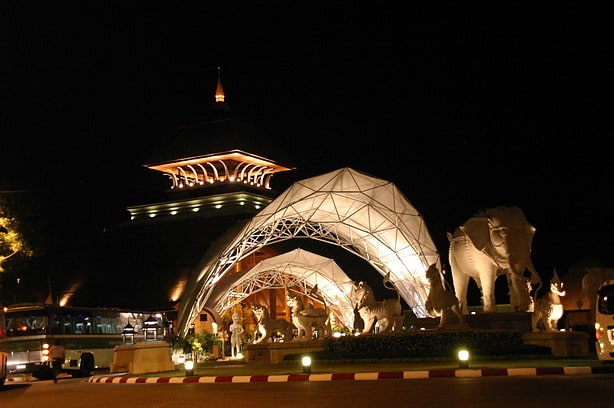
Also known as: เชียงใหม่ไนท์ซาฟารี
Exotic animal safari park. Chiang Mai Night Safari is located in the sub district of Mae Hia in Chiang Mai, and the district Nong Khwai, and the district Hang Dong. The zoo is located west of Royal Park Rajapruek. Chiang Mai Night Safari is a government property under the Zoological Park Organization. The park was opened for the first time on the 18th of November 2005 and opened officially on the 6 February 2006. Initially, it was under Designated Areas for Sustainable Tourism Administration and the Pinkanakorn Development Agency. Chiang Mai Night Safari is believed to be the first nocturnal zoo in Thailand and is the largest in the world, covering an area of 819 Rai. Presently Chiang Mai Night Safari has changed their opening hours for the tourists to be able to enter during both during the day and night.
In Chiang Mai Night Safari there are some areas where non-dangerous animals are able to roam freely where tourists are able to get up close and personal to the animals. From the entry gate up to the main building there are wild deer and muntjac roaming around, they are also seen around the north and south tour zones.[12]
Ban Ho Mosque
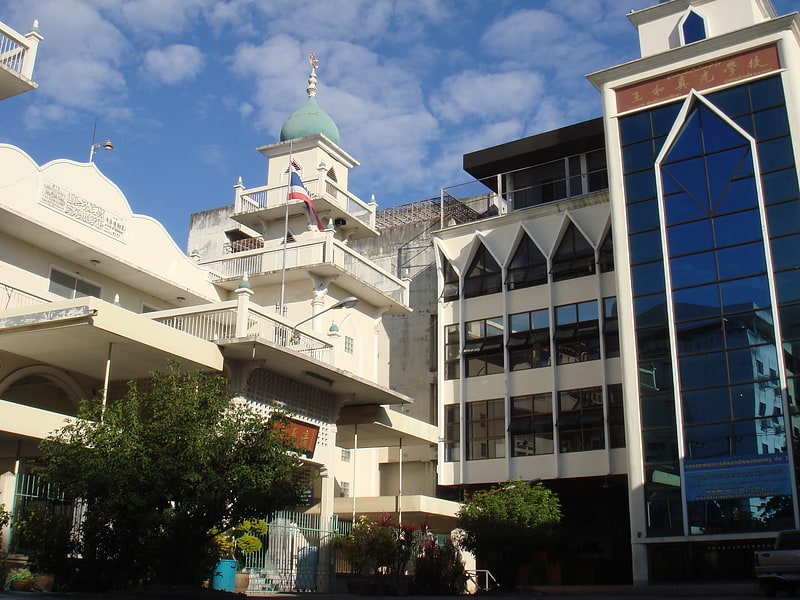
Also known as: มัสยิดบ้านฮ่อ
Mosque in Chiang Mai, Thailand. Hedaytul Islam Mosque, near the Chiang Mai Night Bazaar, is one of the biggest mosques in the province, and also one of the seven Chinese mosques in Chiang Mai.[13]
Major Cineplex
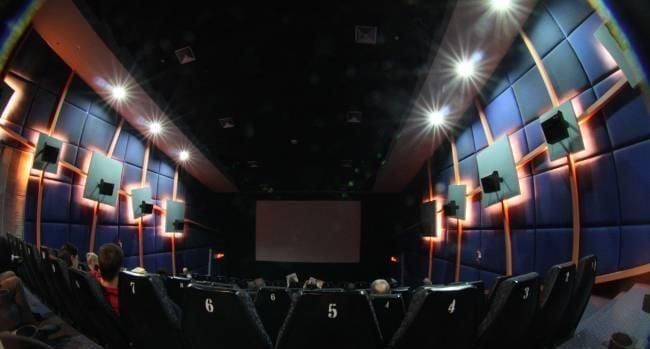
Nightlife, Cinema
Address: CentralPlaza Chiangmai Airport, 50200 เมืองเชียงใหม่
Wat Chedi Liam

Also known as: วัดเจดีย์เหลี่ยม
Wat in Chiang Mai, Thailand. Wat Chedi Liam, formerly known as Wat Ku Kham, is one of the wats in the ancient Thai city of Wiang Kum Kam, now part of present-day Chiang Mai.[14]
Mae Ping River Cruise
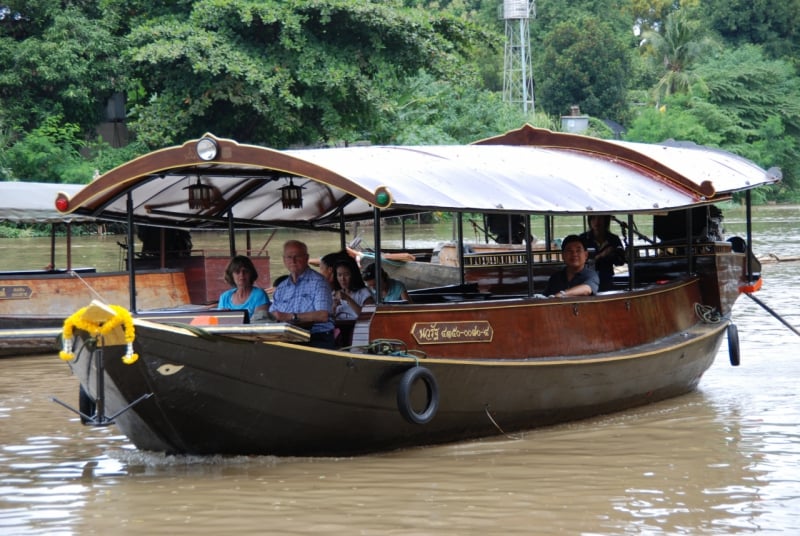
Boat tours, Outdoor activities, Tours, Boat or ferry, River cruise, Beach
Address: 133, Charoenprathet Road, 50100 Chiang Mai
Wat Ku Tao
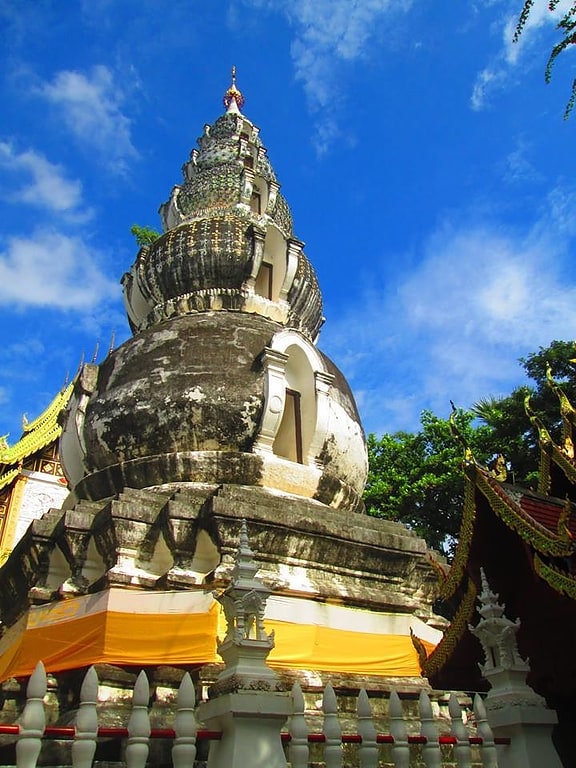
Temple in Chiang Mai, Thailand. Wat Ku Tao is a Buddhist temple in Chiang Mai, Thailand. The temple was built in 1613 to enshrine the remains of Nawrahta Minsaw, the first Burmese ruler of Lan Na. The temple is known for its distinctive chedi, which was built in the Yunnanese style, arranged in a series of five diminishing spheres that represent the five historical and future Buddhas. The temple presently caters to Chiang Mai's Shan community.[15]
Address: Ku Tao Road, Chang Phuak, 50200 เมืองเชียงใหม่
Wat Chang Kham
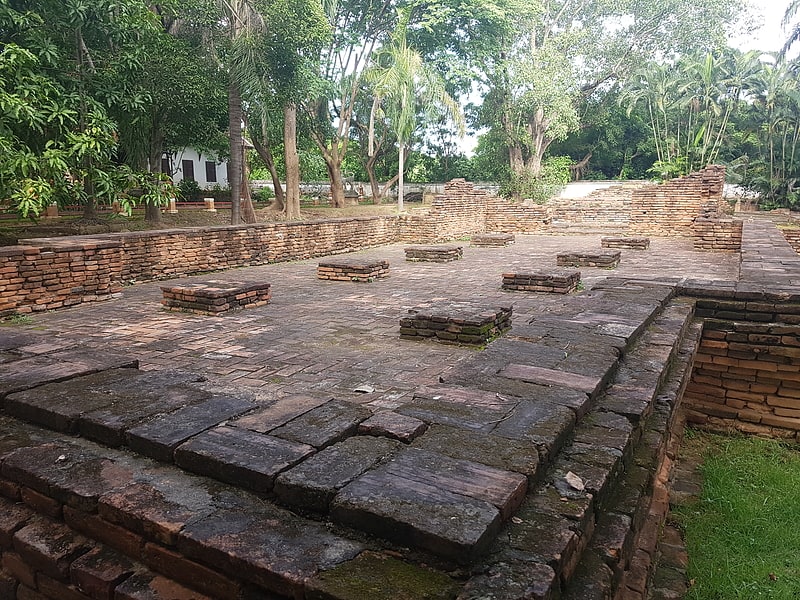
Buddhist temple in Wiang, Thoeng, Thailand. Wat Chang Kham, formerly known as Wat Kan Thom after the name of its builder, is a ruined temple that is part of the Wiang Kum Kam archaeological area, outside of Chiang Mai in northern Thailand. The present name of the temple is derived from elephant figures supporting one of the structures.
The modern site is within the grounds of a working temple and is adjacent to Wat That Noi, one of the smallest sites in the Wiang Kum Kam archaeological group.[16]
Chiang Mai National Museum
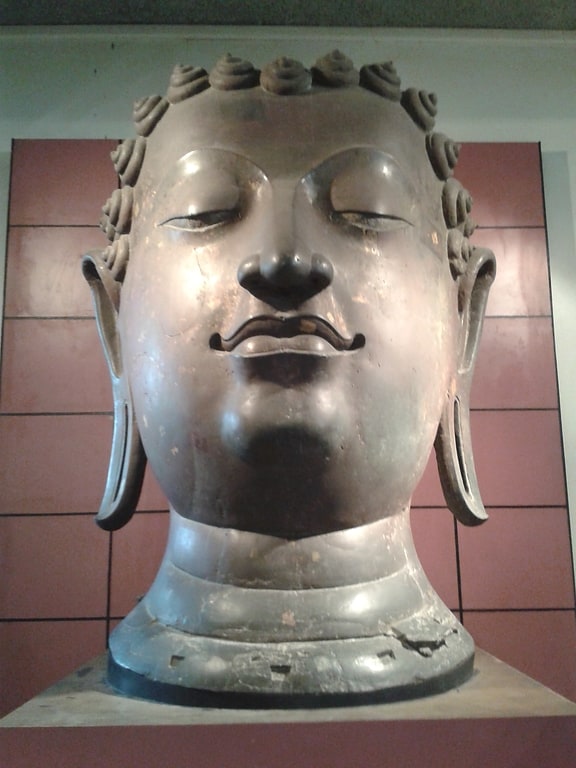
Museum in Chiang Mai, Thailand. The Chiang Mai National Museum is a national museum located in Chiang Mai, northern Thailand. It highlights the history of the Kingdom of Lanna with descriptions in both Thai and English. The museum is located in the vicinity of Wat Chet Yot, in the north-western part of Chiang Mai. It is run by the Fine Arts Department of Thailand.[17]
Address: Superhighway northwest of the Old City near Wat Jed Yod, Chiang Mai
Wat Nan Chang

Wat Nan Chang is a ruined 16th or 17th century temple in the Wiang Kum Kam archaeological complex near modern Chiang Mai in northern Thailand.
Excavated from 2002 to 2003, the temple primarily provides evidence of ancient flooding in the region, having been inundated by some 1.8 meters of sediment. It is speculated that it was built to face a now dried up route of the Ping River, a major transportation and trade route of historic periods.
Notably within the 'Wiang Kum Kam archaeological group, the site includes structures from two different historic periods that had been built directly on top of one another. It also faces north, whereas most of the other temples in the group face east.
A stucco of a makara (a mythical sea creature from Indian mythology, blending crocodile, dolphin and elephant features) with a nāga protruding from its mouth was found associated with a stairway. Under the middle of the main pedestal base for the main Buddha image in the vihara, three additional stuccos were found of a qilin (Chinese mythical creature), a hemaraj (an apparently either uniquely Thai or rare South Asian mythical lion/swan creature) and a lion.
In addition, Chinese ceramics of the Ming dynasty were found in two groups, demonstrating a trade relationship between Wiang Kum Kam and China.[18]